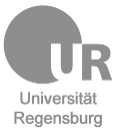Autoridad y persuasion:
repetición y paronomasia en la carta de Mari ARM 26.5
DOI:
https://doi.org/10.35305/cl.vi18.69Resumen
Este artículo explora los usos retóricos significantes de la repetición en la carta de Mari 26.5. Luego de presentar la intención de ARM 26.5 y revisar algunos usos de la repetición en esta misiva, se estudia la forma verbal ŠU-UḪ-ḪU y se considera su significado, así como también su relevancia como instancia de paronomasia. Finalmente, el artículo reflexiona brevemente sobre el uso más amplio de la persuasión y su relación con la autoridad durante el periodo documentado por los archivos de Mari.
Descargas
Citas
BE´RANGER, Marine (2018) D´eveloppement des pratiques d’´ecriture et de l’expression ´ecrite: recherches sur les lettres de l’´epoque amorrite (2002- 1595 av. J.-C.). Dissertation of l’Universit´e de recherche Paris Sciences et Lettres.
BOOTH, Wayne C. (1993) The Rhetoric of Fiction. Chicago: University of Chicago Press.
BROCKELMANN, Carl (1995) Lexicon Syriacum (2nd Edition). Hildes- heim/Zu¨rich/New York: Georg Olms Verlag.
CHARPIN, Dominique (2013) “ Ainsi parle l’empereur: A` propos de la correspondance des sukkal-mah”, in: De Graef, K. and Tavernier, J. (eds.), Susa and Elam: Archaeological, Philological, Historical and Geographical Perspectives. Proceedings of the International Congress held at Ghent Uni- versity, December 14-17, 2009. Leiden/Boston: Brill, pp. 341-353.
Comprehensive Aramaic Lexicon. Hebrew Union College. Available at http://cal.huc.edu.
DURAND, Jean-Marie (2019) Les premi`eres ann´ees du roi Zimrˆı-Lˆım de Mari, premi`ere partie. Archives royales de Mari XXXIII. Leuven, Paris, and Bristol, CT: Peeters.
DURAND, Jean-Marie (1989) Archives ´epistolaires de Mari I/1. Archives royales de Mari XXVI/1. Paris: E´ditions Recherche sur les Civilisations.
DURAND, Jean-Marie (1994) “L’empereur d’E´lam et ses vassaux”, in: Gasche H., Tanret M., Janssen C. and Degraeve A. (eds.), Cinquante-deux r´eflexions sur le Proche-Orient ancien offertes en hommage `a L´eon De Meyer. Peeters: Ghent, pp. 15-22.
GUICHARD, Micha¨el & ZIEGLER, Nele (2004) “Yanuˆh-Samar et les Ekallˆa- t´eens en d´etresse”, in: Dercksen, J. G. (ed.), Assyria and Beyond: Studies Presented to Mogens Trolle Larsen. Leiden: Hederlands Instituut Voor Het Nabije Oosten, pp. 229-48.
HASSELBACH-ANDEE, Rebecca (2015) ”Explicit performative utterances in Semitic”, in: Edzard, L. (Ed.), Arabic and Semitic Linguistics Contex- tualized: A Festschrift for Jan Rets¨o. Wiesbaden: Harrassowitz Verlag: 448-485.
HEIMPEL, Wolfgang (2003) Letters to the King of Mari: A New Trans- lation with Historical Introduction, Notes, and Commentary. Winona Lake: Eisenbrauns.
JASTROW, Marcus (1903) A Dictionary of the Targumi, the Talmud Babli and Yerushalmi, and the Midrashic Literature. London/New York: Luzac and Putnam’s Sons.
LANDSBERGER, Benno (1960) “Einige unerkannt gebliebene oder verkan- nte Nomina des Akkadischen”, Wiener Zeitschrift fu¨r die Kunde des Mor- genlandes 56: 109-129.
LAUSBERG, Heinrich (1998) Handbook of Literary Rhetoric: A Founda- tion for Literary Study. Leiden: Brill.
LINCOLN, Bruce (1994) Authority: Construction and Corrosion. Chicago: University of Chicago Press.
PARDEE, Dennis & WHITING, Robert (1987) “Aspects of Epistolary Ver- bal Usage in Ugaritic and Akkadian”, Bulletin of the School of Oriental and African Studies 50: 1-31.
SASSON, Jack (1998) “About ‘Mari and the Bible’”, Revue d’Assyriologie et d’Arch´eologie Orientale 92: 91-123.
SOKOLOFF, Michael (2009) A Syriac Lexicon. Winona Lake and Piscat- away: Eisenbrauns and Gorgias.
SOKOLOFF, Michael (2002) A Dictionary of Jewish Babylonian Aramaic of the Talmudic and Geonic Periods. Ramat Gan: Bar Ilan University Press.
SOKOLOFF, Michael (1992) A Dictionary of Jewish Palestinian Aramaic of the Byzantine Period. Ramat Gan: Bar Ilan University Press.
VON SODEN, Wolfram (1977) “Zwei K¨onigsgebete an Iˇstar aus Assyrien”, Archiv fu¨r Orientforschung 25: 37-49.
Descargas
Publicado
Cómo citar
Número
Sección
Licencia
Derechos de autor 2019 Claroscuro. Revista del Centro de Estudios sobre Diversidad Cultural

Esta obra está bajo una licencia internacional Creative Commons Atribución-NoComercial-CompartirIgual 4.0.

















 Centro de Estudios sobre Diversidad Cultural
Centro de Estudios sobre Diversidad Cultural

